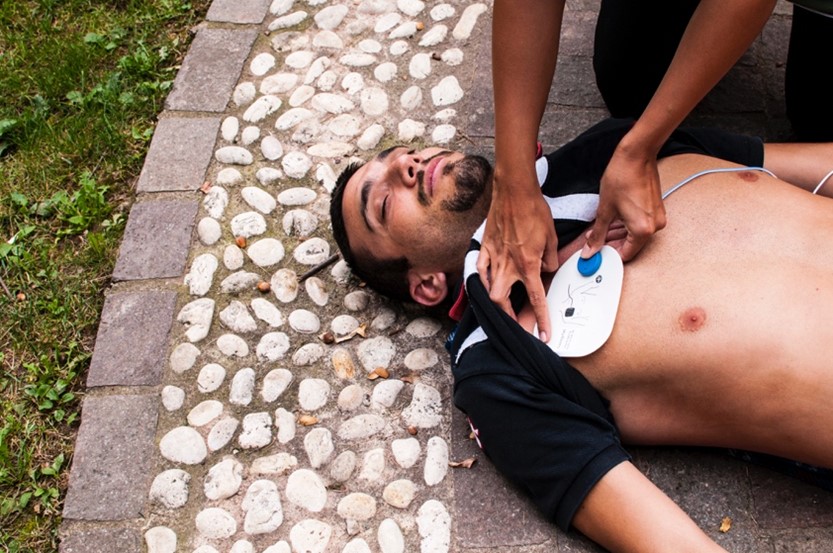Welcome >> Initiatives – Lifesaving Strategies >> Learn CPR & AED Usage
Laypersons starting CPR before 911-dispatched help arrives can double to quadruple chances of survival.
Each second following sudden cardiac arrest is critical. And that’s why it’s so important to take quick action in three steps: Call, Push, Shock.
To help you feel prepared and ready to assist at a moment’s notice, we’ve compiled information to help you identify the signs of sudden cardiac arrest, then use Hands-Only CPR and, if available, an automated external defibrillator to provide lifesaving assistance until paramedics arrive.
If you spot someone suffering from sudden cardiac arrest, one of the fastest, most effective ways to provide assistance is with Hands-Only CPR. If you’re unfamiliar with CPR technique, Hands-Only CPR requires just two steps:
Continue Hands-Only CPR until an AED is in place and ready to administer a shock or until first responders arrive.
Please note: AEDs are built with safety in mind and cannot deliver unnecessary shocks to a person.

Sudden cardiac arrest and heart attack are two different cardiac emergencies. Knowing the difference between the two can help you more quickly assess and deliver next steps.
Sudden cardiac arrest strikes without warning and, when it happens, the heart stops beating. Because the heart has stopped beating, Hands-Only CPR and an AED are required to restart the heart. If someone near you collapses and does not respond to shaking or shouting, immediately begin administering Hands-Only CPR and call 911 (call-push-shock).
During a heart attack, a blockage slows or stops blood flow to the heart — a “circulation problem,” according to the American Heart Association. During a heart attack, the person’s heart may continue beating and the person experiencing the heart attack may maintain consciousness. Call 911 or help transport the person to the nearest hospital. If the person loses consciousness and becomes unresponsive, deliver Hands-Only CPR and direct someone else to search for a nearby AED. Heart attacks can sometimes trigger SCA.
“Both cardiac arrest and heart attack are medical emergencies and require prompt medical treatment,” according to AHA’s “Answers By Heart: What Is Cardiac Arrest?” guide.
© 2024 CPR Foundation, Inc.